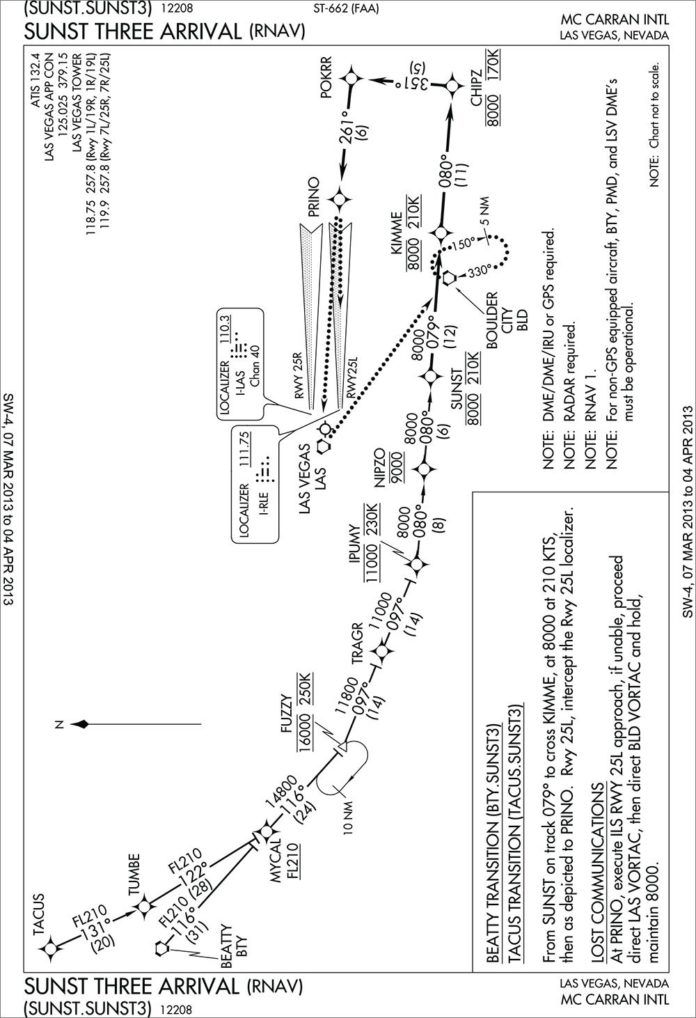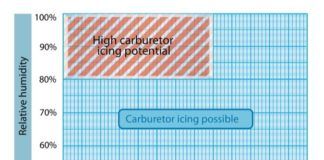Back in February we took a look at the PUFFR ONE arrival into Denver Centennial and highlighted how a “descend via” arrival clearance with multiple speed and altitude restrictions works in a perfect world in which procedures are flown exactly as charted. Just as often, however, pilots are given vectors off the arrival or additional speed or crossing restrictions that are not charted.
These ATC instructions could be due to a local playbook change that the TERPS folks haven’t gotten around to charting yet, it could be just due to an aircraft up ahead that botched the flow, or it could be just one of those days. In any case, the interplay between the charted procedure restrictions and any additional ATC instructions is not always clearly understood and can easily lead to a pilot deviation.
What is Normal?
Much of this confusion can be attributed to the often-heard ATC instruction to “resume normal speed.” Receiving such an instruction should make a pilot pause to ask the existential question of “what is normal?” Until recently, the answer depended on whether there was a published speed restriction that applied to your route or not. If there was, the pilot should comply with it, otherwise the pilot should choose an appropriate speed. The problem was that too many pilots heard “normal speed” and thought “unrestricted speed.”
Last year, the FAA revised its ATC phraseology to clarify expectations following the termination of a speed restriction. Since then, that change has been hiding as a graphic notice in the NOTAM publication, but should be published in the Pilot/Controller Glossary by the time you read this. The update changes the definition of “normal speed,” and introduces additional instructions that may be issued depending upon the situation (see sidebar).
Most significantly, the use of “resume normal speed” has been scaled back to be issued only when no other speed restriction exists. A new instruction of “resume published speed” will now be issued when there is an applicable speed restriction. That means, if you receive “resume published speed,” and weren’t aware that there was a published speed, you had better figure it out quickly!
LAS SUNST THREE
Some days you just can’t win with ATC, and today is one of those days as you arrive into the Las Vegas, Nevada area with the SUNST THREE arrival as part of your clearance. Trouble starts early, because before you even begin the arrival, ATC tells you to slow to 250 knots for in-trail spacing. A couple minutes later you receive a clearance direct TACUS and “resume normal speed.” Because there are no published speed restrictions yet, and ATC doesn’t need you to fly at 250 knots anymore, speed is left at your discretion.
Arriving at TACUS and not having received a “descend via” clearance, you navigate laterally along the route and will comply with any speed restrictions, but not altitude restrictions. Outside of MYCAL, you receive a clearance to “descend via the SUNST THREE arrival,” allowing you to begin navigating vertically as well. Now it’s smooth sailing all the way to the runway, or so you think.
Like a good little pilot, you’re all set to cross FUZZY at 16,000 and 250 knots, but apparently the pilot ahead of you wasn’t quite as prepared, because ATC calls and tells you “fly heading 040, vectors for traffic, expect to rejoin the arrival at IPUMY.” You’re temporarily off the arrival, so you just maintain your present speed and altitude. Eventually you receive “proceed direct IPUMY, resume SUNST THREE arrival, comply with restrictions.” Now you need to start thinking vertically again so that you meet the published restrictions at IPUMY.
They say bad things come in threes, and that’s the way it seems today. You’re barely past IPUMY and descending to cross NIPZO at 9,000 when ATC calls again to tell you “slow to 180 knots.” You make it so and continue to comply with the published altitude restrictions. Even though the published speed restriction is 230 knots for this segment, ATC instructions trump what’s on the chart, so you stay at 180 knots until told otherwise.
Between SUNST and KIMMY, ATC gives you “resume published speed,” which is your cue to speed up, but only to 210 knots, the new speed restriction after SUNST. Speed restrictions persist beyond the fix they’re defined at, so you may need to look upstream to find one that applies. After passing KIMMY, your throttle jockeying thankfully ends when you receive your approach clearance, which cancels existing speed restrictions unless new ones are issued.
Get Used to It
You might have noticed an abundance of new, usually RNAV, arrivals and departures over the last few years. They have had a significant impact on ATC efficiency, reduced radio chatter and shortened clearance deliveries. In short, they’re here to stay. Right now, most of the arrivals with multiple stepdowns and speed restrictions are for jets arriving from the flight levels, but we’re seeing more and more with speeds and altitudes applicable to light aircraft as well.
At the moment, clearances allowing pilots to navigate laterally and vertically without additional ATC instructions are limited to “descend via” clearances on some arrivals. Last year, after years of planning, the FAA was all set to permit similar “climb via” clearances for departures, but changed its mind at the last minute due to (surprise) concerns about the coordination of pilot and controller briefing material. Chances are that it will be implemented in the near future, so be prepared.
Speed Assignment Phraseology
In a classic case of closing the barn door after the horses have fled, the FAA has finally established clear and definitive language to help us understand the controller’s expectations for our compliance with routing, altitude restrictions and speed restrictions on arrivals. This has always been confusing, but more so recently with all the RNAV procedures.
Resume Normal Speed — Cancels ATC assigned speed restrictions and no published speed restrictions apply. Previously, if you were flying a procedure with published speeds, this terminology required you to comply with the published restrictions.
Resume Published Speed — Cancels ATC assigned speed restrictions and published speed restrictions on the current procedure apply.
Comply With Restrictions — Requires aircraft joining or resuming a procedure to comply with published speed and altitude restrictions.
Delete Speed Restrictions — Published speed restrictions on a charted procedure are no longer required. Comply with the routing and altitude restrictions.
Resume (Arrival Name) — Following a vector off the arrival, rejoin the arrival. It’s often combined with one of the above phrases to clarify restriction expectations.
Descend via (Arrival Name) — Follow the routing of the arrival procedure and comply with all speed and altitude restrictions as published.
Cleared via (Arrival Name) — Navigate laterally on the arrival, with ATC assigned altitudes or crossing restrictions. Comply with all speed restrictions as published, unless instructed otherwise.
Lee Smith, ATP/CFII, is an aviation consultant and flight instructor in Northern Virginia.





